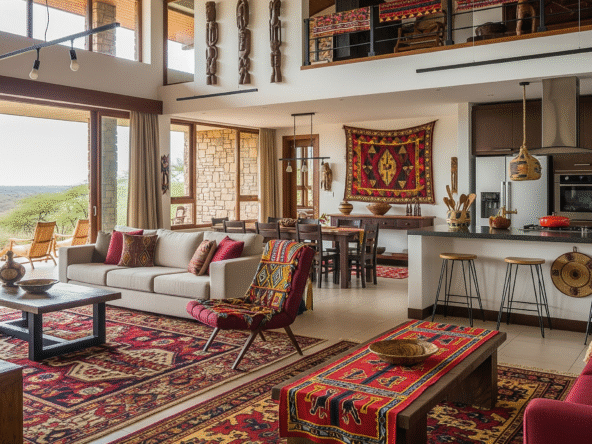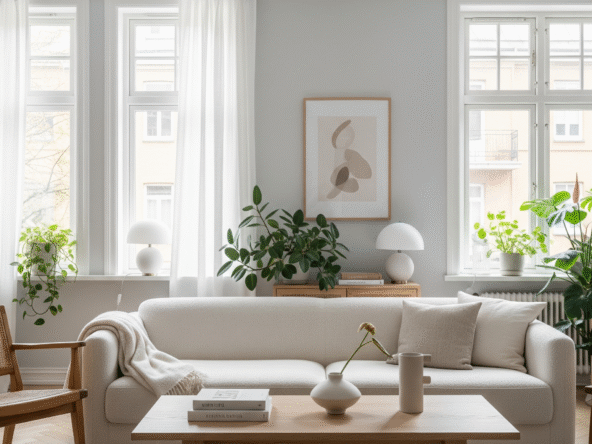Flooring is one of the most impactful finish choices when building or upgrading a home in Kenya. It not only affects the visual appeal of a room but also determines long-term maintenance and durability. Whether you’re constructing a starter home in Matuu, completing an off-plan unit in Joska, or renovating rental units along Kangundo Road, you can achieve attractive and functional flooring without exceeding your budget.
This guide explores practical flooring materials available in the Kenyan market, comparing their features, affordability, and ideal applications. Each option is suited for specific housing goals, and when combined with smart construction decisions, they offer excellent value for money.
Cement Screed Floors
Cement screed is a simple and widely used flooring option in entry-level homes across Kenya. It involves a mixture of cement and sand that is leveled and troweled to create a smooth, flat surface.
Screed floors are among the most affordable choices and can be used as a final surface or painted with floor polish for a neater look. They are quick to install and ideal for homes with tight budgets. However, they are prone to cracking if not cured properly and may lack the visual appeal of tiled finishes.
Screed flooring is common in homes under the KSh 1 million mark, as highlighted in Affordable Houses in Kenya.
Ceramic Floor Tiles
Ceramic tiles are a budget-friendly way to introduce a decorative and durable surface. They are available in a range of sizes and finishes, such as glossy, matte, and textured.
Ceramic tiles are easy to clean, water-resistant, and hold up well in high-traffic areas if installed on a properly compacted sub-base. However, they can be slippery when wet and may crack if the underlying foundation shifts or is poorly done.
These tiles are frequently used in urban homes and master-planned developments.
Vinyl Floor Sheets
Vinyl flooring is increasingly popular for modern renovations and quick upgrades. Supplied in rolls or planks, it often mimics the look of hardwood, stone, or ceramic tile.
It is soft underfoot, water-resistant, and easy to clean, making it ideal for bedrooms or apartment units. Vinyl can also be laid over existing floors. Its main drawback is that it is less durable in high-traffic areas and may bubble or tear if not installed correctly.
This is a smart choice for property owners refreshing older units in Nairobi’s satellite towns.
Terrazzo Floors
Terrazzo is a durable and polished floor finish created by embedding marble, granite, or quartz chips into a cement base and grinding the surface smooth.
This option is ideal for high-traffic spaces such as corridors or living areas. It offers a timeless look and excellent longevity. However, it requires skilled labor and is more expensive than basic finishes like screed or vinyl.
Once associated with institutions, terrazzo is making a comeback in high-end residential homes. For additional cost-effective outdoor ideas that match terrazzo’s durability, see Affordable Paving Options.
Rammed Earth and Clay Tile Floors
In line with sustainable design trends, rammed earth and clay tiles are eco-conscious flooring choices. These materials bring a rustic charm to interiors while helping maintain cool indoor temperatures.
Clay tiles are especially useful in rural or farmhouse-style homes. Rammed earth floors require careful finishing but work well with similarly constructed walls, as described in Rammed Earth Wall Construction.
While beautiful and environmentally friendly, these materials may not be suitable for high-moisture areas or all design aesthetics.
How to Choose the Right Floor for Your Budget and Purpose
Here’s a quick comparison of typical flooring options based on cost and use case:
| Flooring Type | Average Cost (KSh per sq. m) | Best Suited For |
|---|---|---|
| Cement Screed | 200–300 | Entry-level homes, basic rentals |
| Ceramic Tiles | 600–1,000 | Urban residences, wet areas, living spaces |
| Vinyl Flooring | 500–900 | Bedrooms, apartments, DIY upgrades |
| Terrazzo | 1,200–2,000 | High-end homes, long-term investment builds |
| Clay Tile/Rammed Earth | 700–1,500 | Cottages, eco-homes, rural properties |
Common Flooring Mistakes to Avoid
When choosing and installing floors, avoid these common errors:
- Failing to waterproof beneath floors in bathrooms and kitchens
- Using the same floor finish for every room regardless of function
- Ignoring sub-base compaction, leading to future cracks
- Choosing dark floors in spaces that lack natural lighting
Making these mistakes can add unnecessary costs down the line.
Think Beyond the Interior
Flooring should be considered alongside overall site design. Entryways, verandahs, and exterior transitions should factor in landscaping and drainage needs.
For integrated planning tips, see:
With so many flooring options available in Kenya today, building on a budget doesn’t mean compromising on quality or style. By understanding the features and limitations of each material, homeowners can match their floors to their budget, room function, and overall home design goals.
Explore More:



